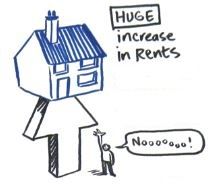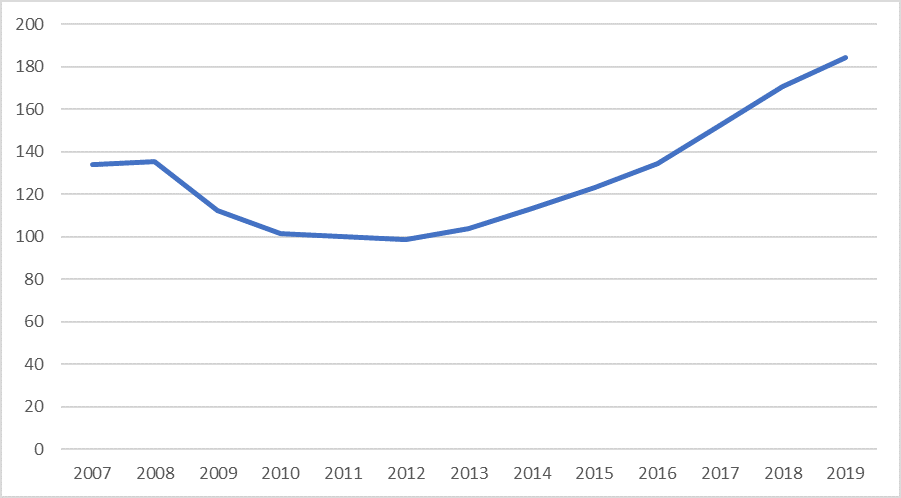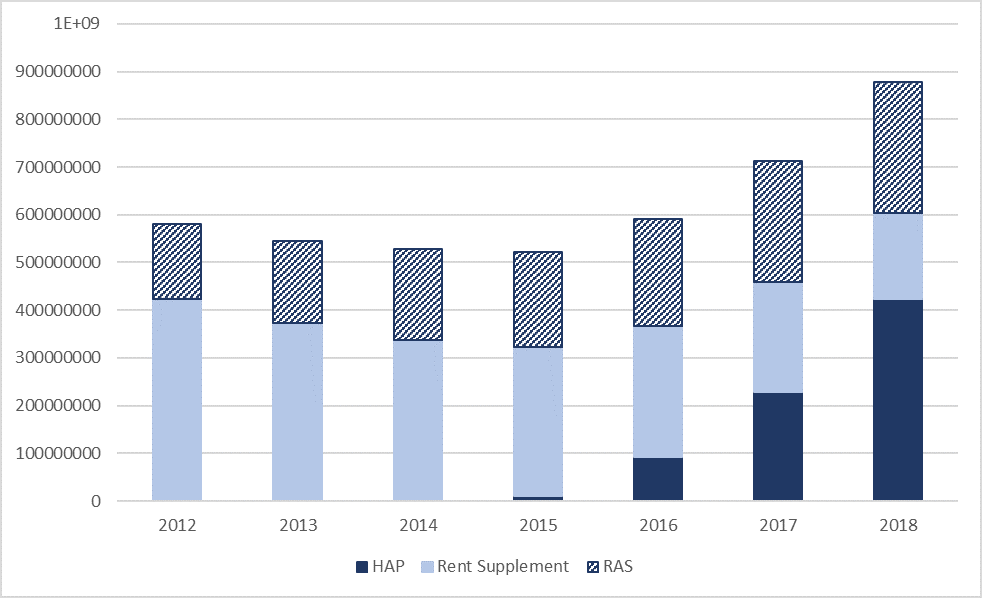Rents and Subsidies continue to rise, but still no security for tenants

According to the Report, asking rents have increased, quarter on quarter, for the last 27 quarters. That’s almost 6 years of growth. The Report uses an average of rents in 2012 as a baseline, clearly showing that rents hit their pre-Recession peak in 2016 and have continued to rise since (Chart 1).
Chart 1: Daft.ie National Rental Index

Source: The Daft.ie Rental Price Report, May 2019 Note: Data for April each year
During this time, subsidies to the private rented sector in the form of Housing Assistance Payments (HAP) and Rental Accommodation Scheme (RAS) leases with Local Authorities have also increased. According to the Local Authority Budgets data published by the Department of Housing, Planning and Local Government, expenditure allocations in respect of RAS increased from €156.8 million in 2012 to €275.2 million in 2018, an increase of 75.5%. Expenditure allocations in respect of HAP (introduced in September 2014), meanwhile, increased from €10.6 million in 2015 to €423.4 million in 2018 – an increase of 3,894%.
Although payments in respect of Rent Supplement decreased during this period, from €422.5 million in 2012 to €179.5 million in 2018, the overall Government expenditure in respect of these three subsidies alone increased from a total of €579.4 million in 2012 (before HAP was introduced) to €878.2 million in 2018 – an increase of 51.5% (Chart 2).
Chart 2: Government Expenditure on RAS, HAP and Rent Supplement, 2012-2018 
Source: Department of Housing, Planning and Local Government, Local Authority Budgets, various years (in respect of RAS and HAP); Department of Employment Affairs and Social Protection, Statistical Report 2017 (in respect of Rent Supplement up to 2017); PQ on Rent Supplement Expenditure dated 24th January 2019 in respect of Rent Supplement for 2018.
HAP has become the main route by which ‘social housing solutions’ are delivered, and is set to account for over 70% of all ‘social housing solutions’ under Rebuilding Ireland. Latest data suggests that there were 45,022 active HAP tenancies up to the end of 2018. This means an average payment of €9,406 per tenancy was made in 2018, or €784.84 per month. Follow the same calculation for the 19,062 active RAS tenancies (up to end October 2018), and this equates to €14,440 per tenancy, or €1,203 per month. According to the Daft.ie Report, the national average asking rent is €1,366, almost double the average HAP payment and higher than the average RAS payment. This begs the following questions:
- How many households, assessed as being in need of social housing, are paying ‘top ups’ to private landlords to keep pace with market rent inflation? And what are they doing without to make these payments?
- How sustainable are these tenancies in the long-term, without robust tenant protections?
- How can Government justify these subsidies after 27 consecutive quarters of rent inflation?
More cost-effective, and sustainable, housing solutions are possible. Social Justice Ireland believe that
- Local Authorities should be facilitated to build social housing units on their own lands.
- Government should invest in affordable rental schemes (also known as cost rental).
- Tenant protections need to be increased.